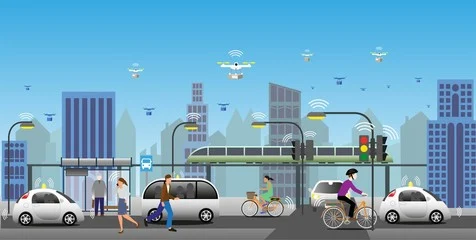Creating resilient connectivity networks

Rebecca Fox
Deputy Secretary, Regional Precincts,
Department of Regional NSW
Government keynote highlights from Rebecca Fox , the Deputy Secretary of Regional Precincts from Department of Regional NSW – in which she discusses about implementing place-based telecommunications solutions to overcome connectivity barriers in regional NSW.
Technological reform in regional NSW

The majority of Australia’s population lives in or close to a metropolitan urban centre, but clearly that is not the case for everyone. And those in rural or regional areas feel that they too deserve to be connected to the technologies and opportunities afforded to their fellow citizens in the cities . At least that is the view of Rebecca Fox , the Deputy Secretary for Regional Precincts at the Department of Regional NSW , who says that the NSW government is “working to bridge the digital divide between metropolitan and regional areas” in order to make “regional NSW a better place to live, to raise a family, to work and to do business.”
The realisation about bridging that divide was formed some years ago, but was first crystallised with the release of the government’s “ 20 year Economic Vision for Regional NSW in 2018, and refreshed in 2020.” Its goal is to set out the “priorities and plans to achieve long-term social and economic success for regional communities,” and was refreshed in response to “a changed economic landscape.” After all, between 2018 and 2020, “we had drought, bushfires, floods and of course the COVID-19 pandemic.” As in most places, this produced “many challenges but also great opportunities.” In many cases, the regions grew as a result of the pandemic because people saw that they could work from anywhere and “regional NSW is booming as a result of that.” The Department itself has “about 4,500 staff spread across 200 regional locations , so we certainly understand that telecommunications are critical.”
”
“With the right policy reforms, the right projects and some good strategic investment in the digital space, our regional communities will be uniquely positioned to leverage opportunities in a post-COVID digital economy for accelerated growth in key sectors.”
Rebecca Fox, Deputy Secretary, Regional Precincts, Department of Regional NSW
Investing in transformation

To really leverage these opportunities, a financial investment is required, and the NSW government is the beneficiary of “$4.2 billion from the Snowy Hydro Legacy Fund , which is the proceeds of the NSW government’s sale of its share in the Snowy Hydro project to the Commonwealth.” It is designed for “transformative investments, and of the total, $400 million has been set aside for “ our Regional Digital Connectivity Program , the mechanism we are using to increase digital assets, close the digital divide and improve liveability, productivity and innovation in regional NSW.”
Essentially this program is divided into “three main parts:”
- Mobile coverage – “We seek to eliminate mobile black spots” and to invest in “future-proofing regional mobile coverage.”
- Gig State – “To bring metro level internet speeds to regional NSW through investment in network infrastructure.”
- Farms of the future – “To enable farmers and agribusinesses to use agricultural technology (agtech) for increased productivity and resource management, such as water monitoring.”
These three priorities , and the money behind them, are all about “ensuring that the NSW taxpayers receive value for money and that our rural and regional communities end up with better tele-communications services.” As such, “we often talk about this being a commercial problem rather than a technical one.” This means that although the plans are for coverage across the entirety of the state, priority needs to be given to areas that have larger populations and great economic activity, as well as where there are other things going on. For instance, “the NBN’s investment and expansion of business fibre zones in Wagga and Dubbo” were good places to start the Gig State projects, largely because “investment by the NBN brings metro equivalent services and pricing for businesses in those locations.” The private sector is also investing in “regional data centres.” This is a good thing, and overall, “the NSW government welcomes all private sector investment because that allows us to direct our scarce resources to support other areas of the state that have poor or no connectivity.” That is better than doubling up and thus “we are reactive and agile.”
To further advance the digital projects in the regions, the NSW 2021-22 budget included “$48 million to expand the farms of the future pilot project,” along with a further “$50 million for mobile coverage and infrastructure investment.” Technically, upgrading telecommunication infrastructure is “a Commonwealth responsibility,” but it can’t be left just to them. So the NSW government is working closely with their federal counterparts and “investing in 22 mobile phone towers in rural and regional NSW under Round 5A of the Commonwealth Mobile Black Spot program. ” The federal and state governments are also working together to “increase safety on the Snowy Mountains Highway, and to improve mobile coverage.” There are a lot of trucks on the highway, but many parts of the road have no connectivity at all, so this is an important and necessary project. In fact, those and other projects with “co-investment opportunities with industry to develop active sharing solutions to solve these commercial problems,” will have the greatest benefits.
The time is right

Aside from the opportunities presented by the pandemic, the federal government is also prioritising many of the same things, so “the timing is right to really have a good crack at closing the digital divide and providing a much improved service in regional locations.” To that end, the NSW government “made a submission to the Commonwealth’s 2021 Regional Telecommunications Review,” with numerous recommendations about “the sharing of infrastructure, the improvement of coverage, and the “flattening of business internet plan pricing across the state.”
The only way some of these changes and improvements will be achieved is through “the continued partnerships with the Commonwealth and with industry.” As a department, “we also need to remain agile in our approach, and develop a suite of interventions that can be applied in rural and remote NSW depending on the specific needs of those local communities.” This is the approach that is required in all areas and across all sectors, in the digital arena and elsewhere because the goal is always to “deliver better digital outcomes for rural and regional communities across all of NSW.”

































